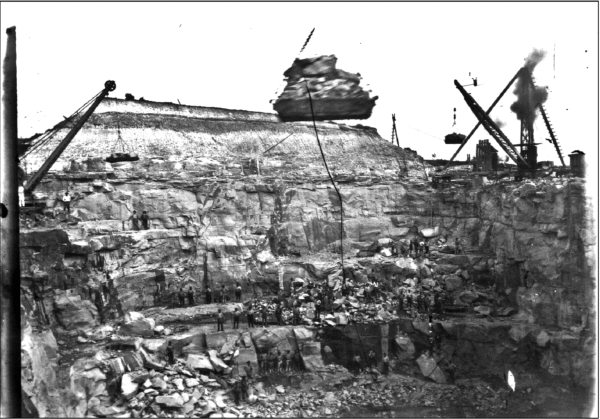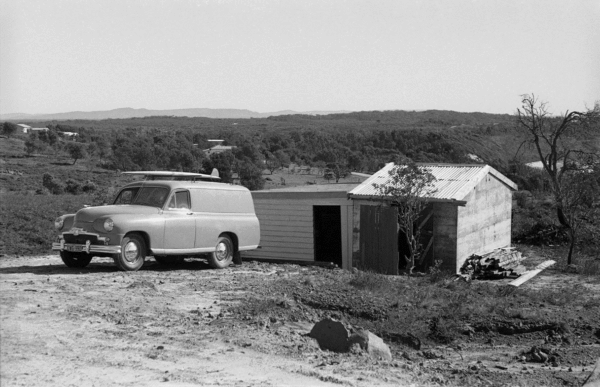Geoff Helisma
Angourie is a small coastal village with a rich history; it’s a place that sits high on the Australian surfing totem and, in January 2007, it was the first national surfing reserve to be gazetted in NSW.
The National Surfing Reserves (NSR) website reflects its importance, describing it as “legendary amongst the surfing community for its superb breaks and natural beauty – [it is] a very special and very soulful location worthy of deep respect”.
But there is more to Angourie than its surfing history, which officially began during the Easter of 1961 when a group of board riders from the Yamba Surf Life Saving Club – Ray Moran, Roger Maclean, Brian Alford and Don Lee – headed south “seeking a less crowded break”, says the surfing reserve’s website.
Angourie’s geology – between Spooky and Angourie points – was a ‘natural’ resource that would help shape the mouth of the Clarence River; it is also the catalyst that piqued the interest of Warrwick Hoad, a recent local resident, surfer and avid historian.
“It all started with the old quarry pictures from the 1890s,” says Warrwick.
“There are five or six pictures of the quarry showing mechanical steam cranes. This was the technology of the 1890s, which has been superseded by diesel engines.”
His engineering background started his interest “in the mechanics and logistics of digging a quarry [known as the Green and Blue pools these days], remote from places of major significant population centres where you had convenient access to manpower, materials and equipment”.
Among Warrwick’s many files – on various subjects, events and recollections of Angourie’s history –, one story connects the village’s early industrial age to its nascent surfing history and its ‘caretaker’, Alex Campbell.
“Once you start talking about the quarry, it’s pretty easy to continue up to the present day: Angourie was born from the early history of the quarry,” Warrwick says.
Warrwick has compiled some known information and photos on Alex Campbell.
“We don’t know very much about him. A lot of people remember him but don’t remember much about his life. According to the Maclean electoral rolls, there were two Alex Campbells in the Lower Clarence (both about the same age): an Alex Roy Campbell and Alex ‘Angourie’ Campbell.
“When old-timers from outside of the Angourie/Yamba area remember Alex Campbell, I suspect they are remembering Alex Roy Campbell. Unfortunately we don’t know when Alex died or where he was buried, which I think is a bit of a shame because he was a true character of Angourie in the early 1960s.”
Campbell was different to many other people in those days: rather than being hostile towards surfers, who were widely judged as hedonistic surf bums and troublemakers, he welcomed them.
He renovated the old powder magazine, once used to store explosives for use at the quarry, and christened it ‘Wavers Inn’ – a sign attached to the building’s gable apex, endorsed by A. Campbell Caretaker, declares ‘Over Nite Board Riders Only’.
“A bloke who called himself the Sixties Relic [his blogger’s pseudonym], must have had fond memories of Alex,” says Warrwick.
“He wrote a lengthy article in the 2000s and he actually said Alex liked surfers, which was fairly remarkable for the 1960s.
“The interesting part about Alex and the Wavers Inn: the powder magazine was almost certainly built in 1897. A long-time Angourie local remembers hosting Alex’s 80th birthday in 1977. This means that Alex was born the same year the powder magazine was built. If true, it makes a poignant story for Alex’s memory.”
For Warrwick, exploring history is like digging for gold: there is always some long-forgotten and fascinating event or person waiting to be discovered.
He has discovered ‘nuggets’ of knowledge, courtesy of the Yamba Museum, the Maclean Historical Society’ Marg Switzer and willing locals.
“I just like collecting information,” he says.
“I like finding the original sources and putting it all together and just recording it. As well, next year will be the centenary of Angourie being proclaimed as a village on the 14th December 1917.
“I think Angourie is rather special in Australia, and a lot of people have come here and enjoyed it.”
“People who came here over the years have taken pictures, and I’d like to get a hold of the old photographs.”
Anyone who would like to assist Warrwick with any pieces of Angourie’s history can contact him through the Facebook page: Angourie History & Surfing.

Circa 1898/99; The Angourie ‘Blue Pool’ excavation (taken from the south end of the Blue Pool, looking north west), where thirty-eight men and three steam shovels are in action. Image: courtesy of Yamba Museum.
A personal tribute to Alex Campbell
By The Sixties Relic
Most board riders who spent a day or two at Angourie in the sixties remember the old bloke with the dog that did tricks.
He’d come trudging up to our camp sites or ‘The Wavers Inn’, pushing his homemade barrow full of firewood.
He’d be decked out in well-laundered but un-ironed, worn, old fashioned clothes.
On his head, lived a bashed about canvass hat with a green lining under the brim, as favoured by farmers and to finish the ensemble, largish, floppy, stained sandshoes.
His mongrel, blue cattle dog, [Missy], always followed faithfully at his heel.
He’d stop for a bit of a chat [and] get Missy to do some tricks, involving begging, shaking hands and catching a match box that had been balanced on her nose.
He’d leave us some firewood and drift off to other campers, never hearing of payment [and sometimes] even sharing ‘a cuppa’ with us….
Few people ever knew his name or anything about him, other than maybe, he might have been the camping-ground ‘caretaker’. That was pretty difficult to ascertain, as he never took any money from us.
He sticks in our memories because, unlike the rest of the older generations, he LIKED us!
The others preferred to believe the popular conception that “all board riders were thieves, defilers of the local maidens and a lot of lazy little layabouts, who should get themselves a haircut and a job”.
Alex was a professional fisherman.
He’d come over from New Zealand years before and by the sixties had finished up retired, living in a cottage at tiny settlement of Angourie.
He never bothered with electricity [and] kept to the old ways of early to bed … early to rise.
He had hurricane lamps and an Aladdin pressure lantern as his illumination and cooked on an old wood stove.
[Bob] Mc Tavish, Nat [Young], Midget [Farrelly] and Warren Cornish had been told of this point by Bob Evans of Surfing World fame.
It was so good, they stayed a week; surfing to exhaustion throughout the day and sleeping like dead men on the beach at night.
The old boy befriended them, and that was when Alex developed the grace, courage, friendliness and dedication of these ‘Wavers’, his admiration for their Spartan lifestyle, shared by those who followed, also sleeping on the beach, or in their cars when it rained, prompted him to commence a new project.
The old, abandoned explosives magazine on the Crown land between the top road and bottom track could be easily done up, so the wave riders had some where sheltered to stay.
Once underway [Alex] acquired materials for a lean to and picked up a tank.
He painted it and at night worked away at the sign for the establishment.
This proclaimed that it was ‘The Wavers Inn’ and advised the caretaker was A. Campbell.
I wonder how he felt about the animals who stayed from time to time and were too lazy to go outside to have a pee.
Many of us arrived to find it empty and started unloading the car only to find the place stank too badly to stay in.
There are very few anecdotes about old Alex.

(l have questioned the two long-term neighbours beside and the one who lived behind him and they could tell me very little about him or his history).
The local Yamba ‘Lads’ of the day reckoned, “He could be a cranky old coot”.
The ladies had a different opinion, they thought, “He was a lovely man… very quiet… a real gentleman … always raised his hat”.
(Probably because he was a bachelor and rather shy of women.)
Some of the owners of the empty, holiday bungalows nearby got pretty mad when it was discovered he had taken it upon himself to open their premises and allow board riders to camp on the floor on particularly inclement nights.
It didn’t hurt his reputation with surfers though.
It’s a quarter of a century now, since old Alex died.
His simple generosity and affiliation with the freedom loving, uncomplicated spirit of the board rider has made his small niche in the history of Malibu riding in Australia.
Some of Missy’s descendants are still peeing on posts in Yamba and probably lying under a bush, plotting an escape from their yard, to chase a car or two.
Note: This is an edited version of the original story. A local resident who was among early the surfers who settled in the area thinks the dog’s name was Flossy.
A relic from the sixties
In (circa) 2005, the ‘Sixties Relic’ stayed at a holiday house at Angourie.
His real name and persona are unknown; however, he left behind a copy of his recollections of the times he spent there in the 1960s.
Warrwick Hoad discovered it during his research, but so far has been unable to track the author down.
Warwick has assumed that Sixties Relic was motivated to write his tribute because “he stayed in the Inn in the 60s” and was staying in a house “a few yards for the Inn’s location”.
Perhaps he was planning to submit it to a surf magazine; however, it seems it never was.

Bob Weeks, who took the three photos on this page, was a prominent photographer of the goings on at Angourie in the 1960s and, in fact, many of his images have become iconic pictures that captured the surfing culture of that time.
Now residing at Woolgoolga, encyclopediaofsurfing.com describes him as an “unassuming photographer from Sydney, Australia; a fixture on the Australian scene from 1960 to 1966, known for his evocative surf lifestyle images as much as his hot-rodding surf-action work”.
His photographs are featured on the Angourie interpretive sign, which is a part of the recently opened Angourie Heritage Walk.